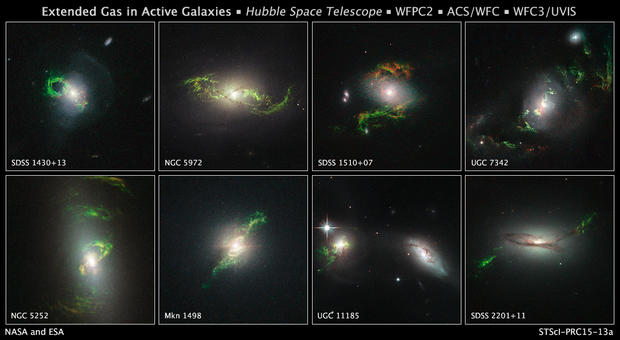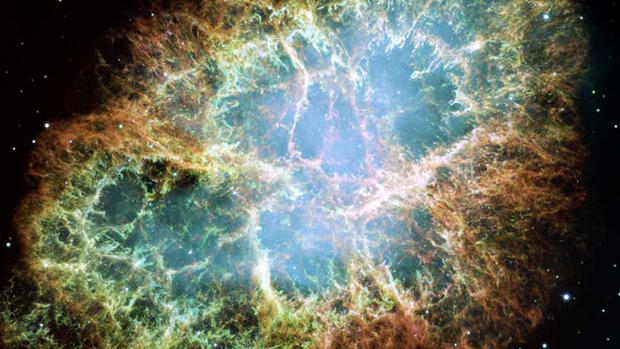Hubble discovers quasar ghosts dancing in space
There are bands of quasar ghosts haunting deep space.
The Hubble Space Telescope has snapped rare images of strange, looped structures that are believed to be long tails of gas formed during a violent merger between two galaxies. These objects were lit up by a blast of radiation from a quasar - the luminous and compact region that surrounds a supermassive black hole at the center of a galaxy.
It would have taken light from the quasar tens of thousands of years to reach them and light them up. So, although the quasars themselves have turned off, the green clouds will continue to glow for much longer before they too fade.
Scientists believe a quasar beam illuminated these distant clouds of gas through a process called photoionisation. Oxygen, helium, nitrogen, sulphur and neon in the filaments absorb light from the quasar and slowly re-emit it over many thousands of years. Their emerald hue is caused by ionized oxygen, which glows green.
The latest discovery from Hubble comes as the iconic telescope is set to celebrate its 25th anniversary later this month.
The first object of this type was found in 2007 by Dutch schoolteacher Hanny van Arkel. She discovered the ghostly structure in the online Galaxy Zoo, a project enlisting the public's help to classify more than a million galaxies catalogued in the Sloan DigitalSky Survey (SDSS). The bizarre feature was dubbed Hanny's Voorwerp (Dutch for Hanny's object).
These latest objects were found in a spin-off of the Galaxy Zoo project, in which about 200 volunteers examined over 16,000 galaxy images in the SDSS to identify the best candidates for clouds similar to Hanny's Voorwerp. A team of researchers analyzed these and found a total of 20 galaxies that had gas ionized by quasars. Their results appear in a paper in the Astronomical Journal.

